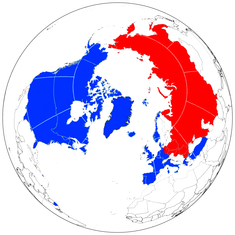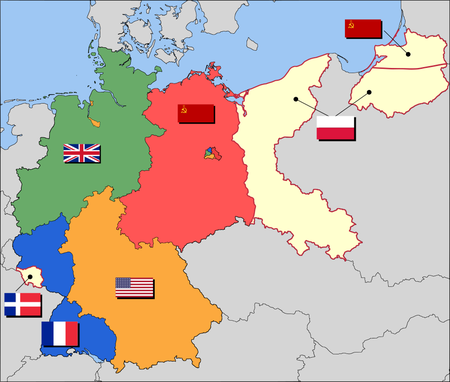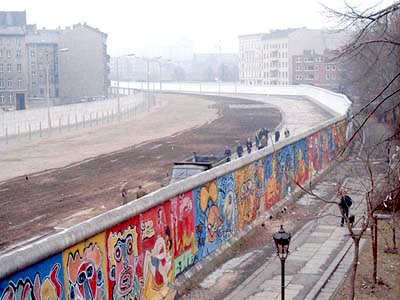
The Cold War Explained (20th century explained #6)
First published: Friday July 30th, 2021
Report this blog
The 20th Century
In this series, I explore events that happened during the 20th century. I will be exploring topics ranging from the World Wars to the Cold War, from the Great Depression to the Fall of communism. This is the sixth of this series. This is about the Cold War.
Introduction
World War Two was a deadly war fought between the Axis Powers (Germany, Italy, and Japan) and the Allied Powers (the United States, Canada, UK, France, and the USSR). In the aftermath, Europe was divided between the two superpowers of the United States and the USSR. To understand this, we need to learn a little more about these two sides.
Capitalism and Democracy
Capitalism is a system where everyone has to compete for money. There are many forms of democracy. In the United States, citizens vote for the president. In Canada and the UK, citizens vote for representatives in parliament. These elections are (almost) always free and fair. Capitalism sprung up in the 18th and 19th centuries. Back then, a majority of nations were monarchies. But, the American and French Revolutions gave people ideas of democracy, in which every person has a right to vote. Soon, monarchies were either overthrown or became constitutional monarchies, (when the monarch didn’t actually have any power but is a representative of the country.)
Communism
Communism is a system in which (in theory), all money should be split between everyone. However, oftentimes all the power would be in the hands of the leader, so they tended to stay in power, becoming dictators. The Soviet Union used to be a communist nation, as well as China. At first, these two countries were allies, but soon, China broke off, creating a third side, with itself, Albania, and Somalia.
Communism was created by Karl Marx in 1848, and spread to Russia during the Russian Revolution, in which a government headed by Tsars (aka a monarchy) became a democracy which became a communist nation under Vladimir Lenin. During WWII, The Soviet Union gained satellite states as well as more territory.
| Nations | |
|---|---|
| Soviet Allies | NATO Allies |
| USSR | USA |
| Poland | UK |
| Czechoslovakia | France |
| Hungary | Spain |
| East Germany | Portugal |
| Romania | Italy |
| Bulgaria | West Germany |
| Cuba | Denmark |
| Syria | Norway | Ethiopia | Japan |
| Vietnam | South Korea |
| Laos | Japan |
| Cambodia | Canada |
| Chinese Allies | Iran (Before 1979) |
| China | UAE |
| Albania | Oman |
| North Korea | ROC |
Wars and Revolutions
Before WWII, China was in the middle of a civil war between the communists and republicans. The Japanese took this as an opportunity to invade. The communists and republicans decided to ally against the Japanese. This war evolved into WWII. But after the Allies won, the civil war resumed. Soon, the Communists had overwhelmingly defeated the Republicans, who fled to Taiwan. The PRC (People's Republic of China; the Communists) and the ROC (Republic of China, the Republicans) were battling over international recognition. While the PRC controlled the mainland, the ROC was a member of the UN. But in 1971, things changed. This year, the "China" that the UN recognized was the PRC. 8 years later, the United States recognized the PRC. Right now, the majority of nations recognize the PRC as the real "China" while 14 nations recognize the ROC. Bhutan is the only country that doesn't recognize either country.
Japan controlled Korea before and during WWII, but when they were defeated, Korea split between the USA and the USSR, with plans to unite them into one Korea. At this point in time, the USA and the USSR were actually allies. This was right after WWII, before the two sides started competing for allies. But soon, relations between the two superpowers went south. The Koreas soon evolved into North Korea and South Korea. The North, aided by the USSR and now-Communist China, invaded the south, and got very far, and by that, I mean around 90 - 95 percent of South Korea. However, the UN landed an army at Incheon. You might be wondering how the Soviet Union and China would allow this. Well, China was represented by the ROC and the Soviet Union boycotted the UN because of that. Soon, the UN forces were driving near the border with China. However, China joined in, and pushed the UN forces back. This back and forth fighting went on for three years. In that time, 3 million people died. The borders of the two Koreas barely changed. But, both North and South Korea claim the whole Korean Peninsula. This can also be shown by their names, as North Korea's Official name is the Democratic People's Republic of Korea (DPRK) while South Korea is officially the Republic of Korea.
Cuba was a Spanish colony in the 1800s. But that all changed in 1898. This year, the United States went to war against Spain, in what is known as the Spanish-American War. This war ended with a win for the United States. So, Spain gave up many colonies: the Philippines, Cuba, Puerto Rico, Guam, and the Northern Mariana Islands. Many of these are still territories of the United States, but Cuba and the Philippines got independence. Cuba got independence in 1902, and until 1959, was an ally to the United States. But in that year, Cuba became a communist nation. At first, the United States tried a ground invasion, but failed miserably at the Bay of Pigs. The Soviet Union took advantage of this and they became allies to Cuba. The United States was now worried that the Soviet Union would launch missiles from Cuba. But, the Soviet Union was also worried. They were worried that NATO would launch missiles from Turkey. The United States used spy planes to patrol the area. One day, someone found it: missile launcher equipment. This gave then-President John Kennedy time to go through all the options: Do nothing, start a blockade, launch air strikes and invade Cuba, or nuke Cuba. Kennedy was the only one not to vote for air strikes, and so he started a blockade. Most ships were stopped and searched for any nuclear weapons. If they didn't have any, they were free to go, but if they did, they were ordered back to Moscow. However, one day, a submarine got past the blockade line, and when navy ships dropped dummy depth charges to see if it was an allied submarine, the people in that submarine were scared, and fearing that war had already started, two of the senior officers voted to launch the nukes. However, a third didn't want to. He was the highest ranking official in the Soviet submarine fleet, and he didn't want to launch nukes. Eventually, the submarine returned to the Soviet Union, and in Cuba and Turkey, missiles were removed and the United States promised not to invade. Disaster had been saved.
Berlin Wall
Europe was divided. In the west, most of the countries were allied to America and were part of NATO. These include the UK, Portugal, Italy, the Netherlands, and West Germany. In the east, most of the nations were occupied by the USSR. These include Poland, Czechoslovakia, Romania, Bulgaria, and East Germany.
Germany was split between the victors of WWII, which eventually created East and West Germany. East Germany was a communist nation while West Germany was democratic. Berlin was deep in East German territory, but was also divided, and when the nations were created, West Berlin stayed as part of West Germany. The East German government had a little...problem with that.

Many East Germans weren’t happy with the new system of government. There was little food, money, and life wasn’t as good as it was in the west. Many moved to the west via the long land border the two nations shared. But soon, the East German government closed the border off. However, people could, and did, go to West Berlin.

Although the rest of West Germany was closed, West Berlin was open to East Berlin. People could take public transport to the West. Many migrated there. East Germany and the Soviet Union had to take action. They wanted West Berlin, so that they could control where East Germans could go. So, they decided to take action. In the late 1940s, The Soviets figured that if they blocked all the roads to West Berlin, it would be given to the East Germans. So, they did that. But, the Americans had a trick up their sleeve. They flew in thousands of tons of supplies from West Germany. The Soviets backed down afterwards.
In 1961, the Berlin wall was constructed. One day, people were riding trains to West Berlin. That night, people listened as construction crews pulled concrete one by one. Slowly, they started building the Berlin Wall. The next morning, people woke up to guards, barbed wire, and the wall. This wall closed off West Berlin. Through the years, many attempted to cross the wall. Some made it. Others didn't.

However, things started changing in the mid 1980s. Around this time, a man called Mikhail Gorbachev assumed power. He had very different ideas than the other leaders. While the others didn't allow free speech, Gorbachev did. While the others didn't allow you to criticize the Soviet government, Gorbachev did. While the others used force to suppress protests, Gorbachev didn't. Soon, countries started distance themselves from the Soviets. They opened their borders. However, East Germany would not budge. But East Germans, tired of communism, found loopholes. They flew to Prague, Czechoslovakia, and then crossed into West Germany through the two's borders. Years went by, and East Germany finally gave up. One day, at a regular press conference, government spokesman Günter Schabowski announced the stunning change: borders would be opened. When asked when this would be put in effect, Schabowski responded with (in German) "Immediately without delay." Immediately, people started flooding the streets that passed through West Berlin. Slowly but surely, the Berlin Wall was broken. A year later, Germany was unified.
End of the Cold War
As we saw, many nations loosened their restrictions. Soon, protests and uprisings broke out. Many countries became more democratic. Many of these nations became democratic after strikes, protests, and pressure forced the ruling parties to call for free elections. In Romania, the leader, Nicolae Ceausescu, tried to arrest Magyar leader. When Ceausescu was in China, a national uprising was launched, and soon, a democratic system was set up.
In the Soviet Union, things were much more complicated. Things got more chaotic as Boris Yeltsin and Gorbachev battled for power. Gorbachev put forward the idea of a democratic USSR: the Union of Soviet Sovereign Republics. But, this failed because of a last-ditch effort to save the communist nation, a few communist officials captured several government buildings. But Yeltsin captured it back with a tank. With this, the Soviet Union was disbanded, and it was replaced by 13 new nations.
Helpful Youtube Channels
These are some of my favorite Youtube Channels that talk about Geography, History, Geo-Politics, and other interesting topics.
American Museum of Natural History
Special thanks to PakistanPunk for his recommendation of British Pathé!
Also, check out Brainpop!
Thanks For Reading!


And also there is west German exclave in East Germany? What is it?
2 - West Berlin
And yes, the part of West Germany in east Germany was West Berlin
Nice Blog anyway! Great Summary :)
btw i just saw a video that was about albania; here is the link: https://www.youtube.com/watch?v=whcB_YH9Q2k